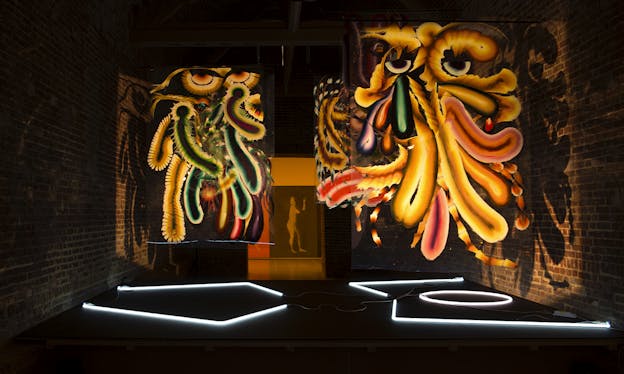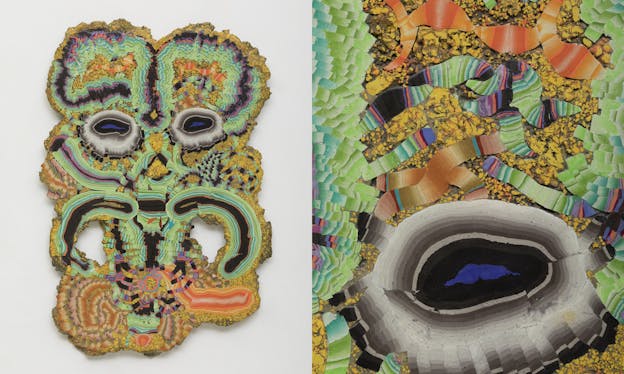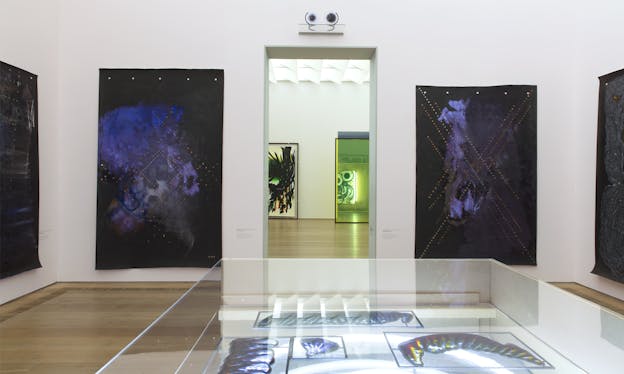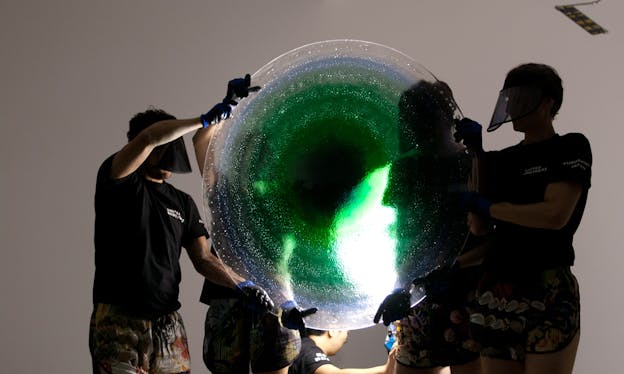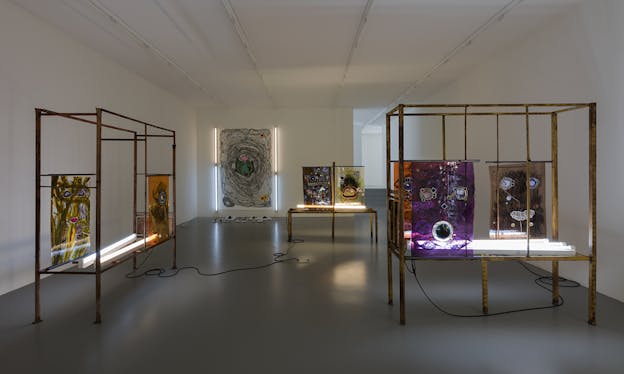Kerstin Brätsch
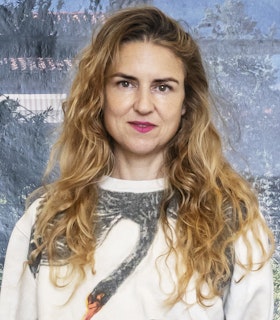
The [pandemic] gave me time to reflect and hold space. I practiced solitude… I had spent decades working with other people, collaborators and artisans, colleagues, and students to investigate the idea of painting in the extended field and suddenly I found myself locked into a tiny cell facing myself with no other art material around than paper and colored pencils. I began to draw, which I had left behind twenty years ago, almost terrified to start and anxious about an uncertainty, insecurity, and emptiness inside.
To my surprise these drawings became extremely intimate and meaningful to me, I developed a relationship with them as if they were my closest friends, my daily mantras.
- Kerstin Brätsch, December 20, 2020
Artist Statement
I define my practice as a migration around painting, oscillating between a conceptual analysis of the medium and a devotion to painterly processes. I am interested in the power of the unknown and interrogating the concept of the occult within painting. I do this by the creation of a third body via collaboration, developing multiple ever-becoming bodies via a collective community, and utilizing traditional craft techniques by manipulating their processes with an awareness of contemporaneity. I return constantly to the relationship between painting and subjectivity—a connection that is softened, destabilized, and sometimes parodied in my work. To question the agency of painting and engage with the expanded field of painting, I invite artisanal practices (such as stained glass, paper marbling, Stucco marmo) and collaborative projects into the equation of painting history. My work does not exist in isolation, but rather as objects of exchange and interaction. This is reflected in my collaborative projects DAS INSTITUT (with Adele Röder since 2007) as well as my on-going collaboration KAYA (with Debo Eilers since 2010).
- December 2019
Biography
Kerstin Brätsch lives and works in New York. She is a painter, working autonomously and in collaboration with others, and her practice incorporates installation, sculpture, and performance. Brätsch received MFAs from Columbia University and Berlin University of the Arts. In 2007 she founded DAS INSTITUT with Adele Röder, and since 2010 she has been working with Debo Eilers under the moniker KAYA. Recent solo projects include Fossil Psychics for Christa, The Museum of Modern Art Terrace Café, New York, NY (2019) and Kersten Brätsch_Ruine / KAYA (Kerstin Bratsch & Debo Eilers) _KOVO, Fondazione MEMMO, Rome, Italy (2018).
